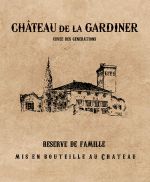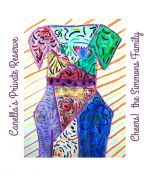
Guess what?!? Northwest Cellars is now selling a rosé wine! Bob has been reluctant to add another wine to our extensive list, but, look! Ask often enough, and, by golly, there it is!
Now I know from the tasting room that some people aren’t interested in rosés. And, I say, What? Why? Because it’s pink? Not sophisticated enough? OK, I grant you, rosé did get a justifiably bad rap back when what we served in the states was simple, overly sweet and treacly. Remember “Blush?” But times have changed. Rosés are on the upswing and have become very popular. For good reason, they can be delicious! Keep up!
So that made me wonder if someone (me!) might want, or need, to know a little more about rosés so they could keep up. Therefore I thought I would share some interesting info on the pink stuff.
The Case for Rosés
We know the color is pink. Rosé = French = pink. In Spanish and Portuguese it is Rosado. In Italian it is Rosato. And it comes in various shades of pink from very pale onion skin-ish to very dark pink, almost red. Indeed, the Center for Rosé Research in Provence, France shows approximately 139 different hues! But color is not an indication of quality or even intensity. It has more to do with the types of grapes used, the way it is made and even the temperature of the grapes as it is produced. Rosés produced at warmer temps will exude more pigment, therefore more color. Rosés are made from red grapes. And since almost all red grapes (there are a few exceptions) produce clear juice, all wine gets its color from the skins of the grapes. So that means the juice of the grapes intended for rosé wines only comes in contact with the skins for a very short time. The shorter the time, the lighter the color. A longer time will yield a darker colored wine. Thus the time of maceration (soaking together) can be anywhere from two hours to two days depending on the grape variety and the choices made by the winemaker. After the chosen length of time, the must (juice with all the skins and pulp) is pressed. The skins and pulp are discarded and the fermentation process will begin.
The short maceration method explained above is the primary and preferred method of making rosé. Approved by the wine world in general.
Also approved is an even shorter method called direct pressing where the grapes don’t macerate at all with the must but are immediately gently pressed. This results in just a hint of color and results in very fresh flavors with more citrus and strawberry notes. Since it is so pale it is sometimes referred to as vin gris meaning grey but it looks nicer than how that sounds!
Another method is called saignée. This means bloodletting in French. So descriptive, eh? But, murder she did not write here. It is a method that actually has a twofold intention. The first is to pull some of the juice (the bleeding off part) from a barrel intended to make red wine, early on, before it has taken on too much color, to make a rosé with it. The juice left in the tank now has more skin to juice ratio resulting in a red wine with more color, tannin and concentration. Some experts in the wine industry look down their noses at this method because they feel the rosé is just an afterthought. But, who cares, if the resulting wine is good? Everybody wins!
Then there is the blending method. OK, this where the wine rubber meets the wine road of wine snobbery. It is where a tad bit of red wine is mixed with a white wine. Just a tad, five percent is enough to turn white pink. But this is viewed as sacrilegious by most winemakers.
And, Monsieur, it is, indeed, banned in France. But yes, mais oui!
Except…
Except for some sparkling wines. Like fine wine. Like, for instance, Ruinart’s rosé Champagne, made with a touch of Pinot Noir in its most fine Chardonnay. One can do that in the Champagne region. Go figure.
As we have been discussing, the aromas and flavor of rosés depend on the particular grape varieties used to produce the wine and the method of production. Because of the short maceration periods used in making rosés, the resulting wine doesn’t pick up much in the way of the protective compounds that enable red wines to keep for so long. Most rosés are meant to be consumed within a year when they are still fruity and fresh.
France is the leading producer of rosés. While many regions make rosé, the region of Provence is prominent as two thirds of viticulture there is dedicated to its production. And there is one appellation in the southern Rhône area that is synonymous with rosé. Tavel. In fact, it is the only appellation that only and exclusively makes rosé. Tavel is allowed to mix red and white grapes in the tank before fermentation. Some of the juice is drawn off early to keep the fresh flavors, and some of the juice is left to macerate longer. It’s a kind of combination of the saignée and direct pressing. This produces a rosé with a unique deep color, spicier flavors and the ability to age, unusual for most rosés.
After France, the other countries that make the most rosés are Spain, the US, and Italy in that order. These countries account for 80% of the global rosé wine production.
There’s a lot more to rosé than I thought! We haven’t even looked at the history. And have barely touched on the unique styles of the many more different regions in France and the other countries. But it’s a start, eh?
By the way, the Northwest Cellars rosé is called Leggiero. A beautiful name meaning light. Why not start there? And cheers to the ultimate summer wine!
~ Peggy












0 Comments